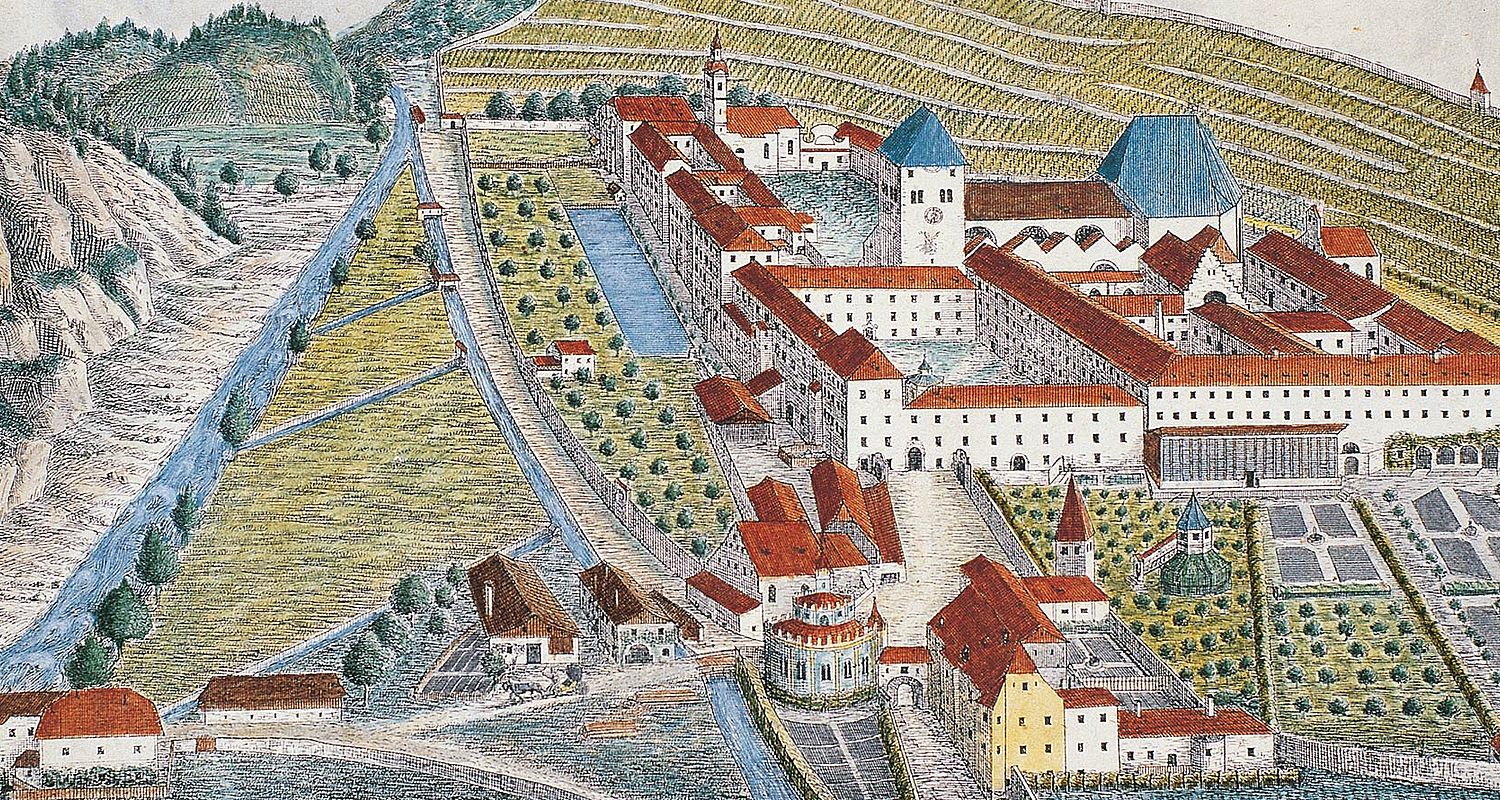You are using an outdated browser. To have the best experience use one of the following browsers:

-
c. 1200
The founding of the Romanesque abbey complex
Neustift Abbey was founded in 1142, but burned to the ground in 1190. The basic features of the complex subsequently built under Provost Konrad von Rodank have been preserved to the present day. The church tower and the ‘Castle of the Holy Angel’ thus date back to the Romanesque era.
-
c. 1500
An artistic heyday
Neustift reached the peak of its artistic development in the Late Gothic era. The high choir of the abbey church was built and furnished with winged altars by the most important Tyrolean artists. Magnificently illustrated manuscripts were produced in the scriptorium.
-
c. 1740
From medieval to Baroque
The Neustift abbey church was redesigned in the Baroque style. While the original medieval exterior was retained, a light-filled, colourful interior was created with frescoes and stucco-work in the Bavarian Late Baroque style.
-
c. 1770
A new home for the knowledge of the world
Between 1770 and 1775 Prelate Leopold von Zanna had a new representative hall built for the abbey library. With its gilded Rococo stucco-work it is one of the most beautiful library halls in the southern German region.
-
c. 1780
The Far East in Neustift
In around 1775/80 the Orient came to Neustift. The anteroom of the library was transformed into a Chinese cabinet with everyday scenes from China on the walls. It shows just how fascinated Europeans of the Rococo era were with distant China.
-
c. 1810
Neustift plundered
The law of the victors: when Bavaria occupied Tyrol the monasteries were dissolved. Wagons drew up at the gates of Neustift and carted off tons of books and art treasures to Innsbruck and Munich, including Michael Pacher’s Church Fathers’ Altar.
-
c. 1900
Neustift art under the hammer
Because the abbey was chronically cash-strapped, it resorted to drastic measures: furniture, paintings and other works of art were sold and ended up in museums and collections halfway round the world.
-
1926
Educational ‘media’ for Neustift
In 1926 the Augustinian grammar school (Gymnasium) in Brixen, which had been run by the Neustift canons since 1844, closed its doors. The school’s library and the collection of teaching material were transferred to Neustift.
-
1992
An art gallery for Neustift
The important Neustift collection of Late-Gothic altar panels acquired a new home under former prelate Chrystostomus Giner. Among the treasures on display in the new art gallery is the fully preserved St Catherine altar by Friedrich Pacher.
-
1998
More space for the abbey museum
The extension of the museum made it possible to exhibit works of art from the Renaissance and Baroque eras. Also on display are globes, maps and historical scientific instruments, which show that the canons’ interests have always reached far outside the monastery walls.
-
2021
Old walls, new attractions
The museum has continued to develop. In May 2021 a new wing was opened. The former coach house of 1886 is now where the tour of the abbey starts, with an infopoint, cash desk, museum shop and additional space for the permanent and special exhibitions.
-
2022
China uncovered
No-one was aware that Neustift had a Far Eastern element. Not until spring 2021, when wall paintings with scenes of everyday life in China from around 1775/80 were uncovered. The restoration of the room was completed in 2022.
